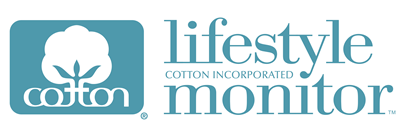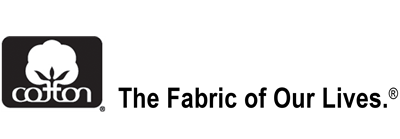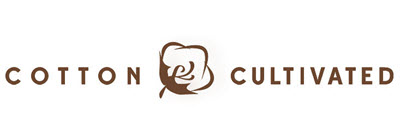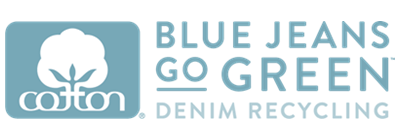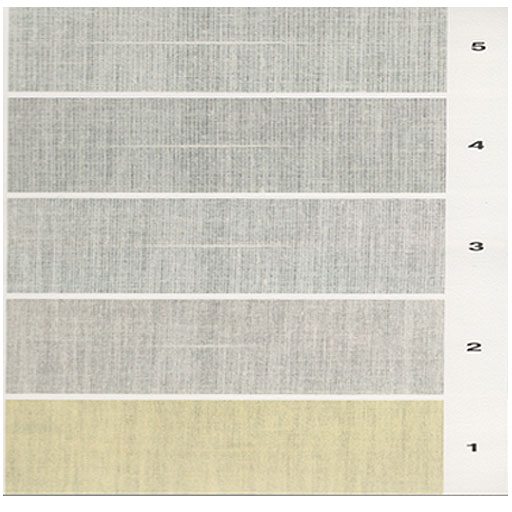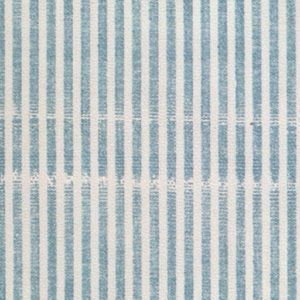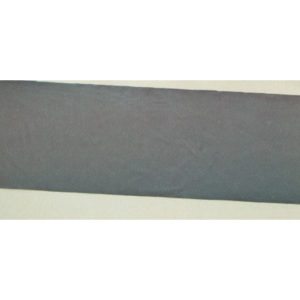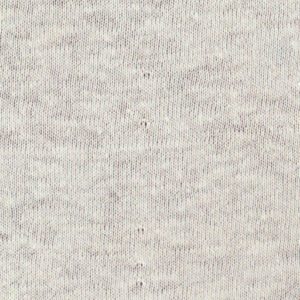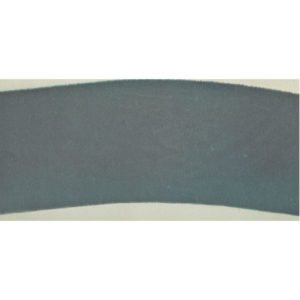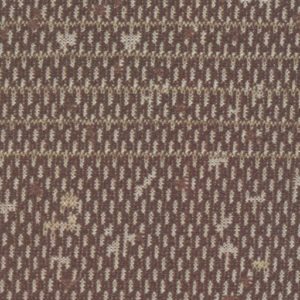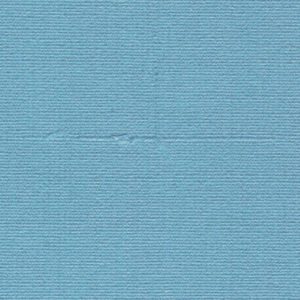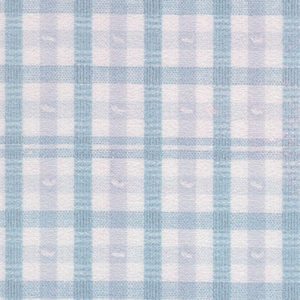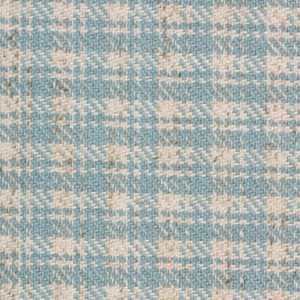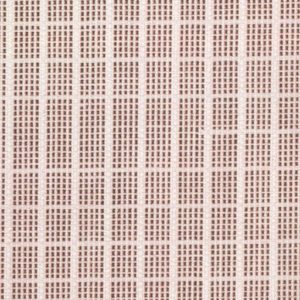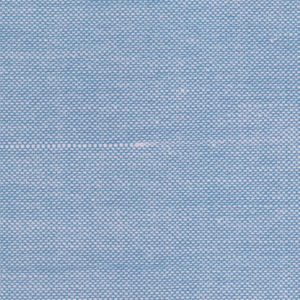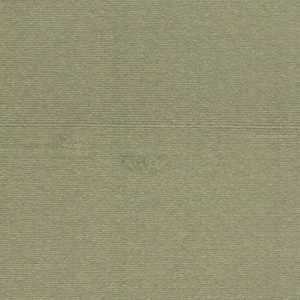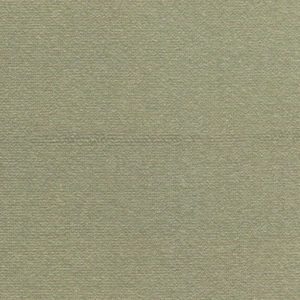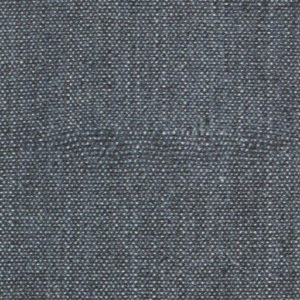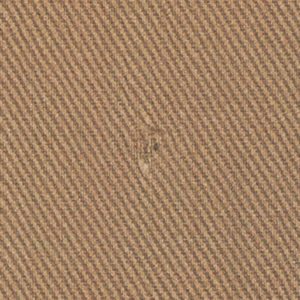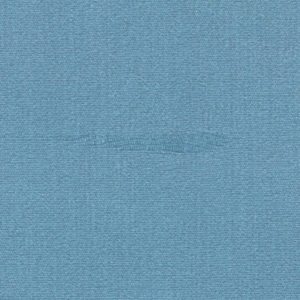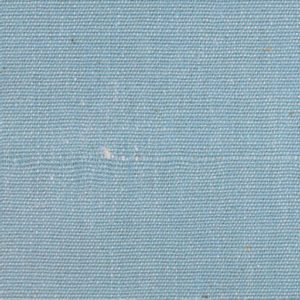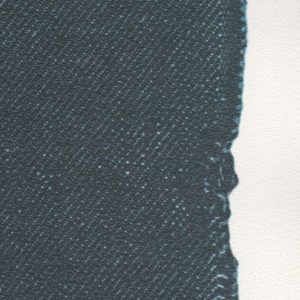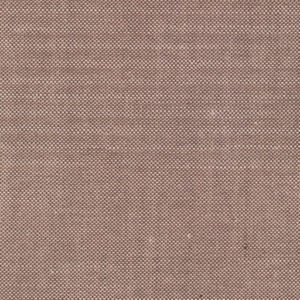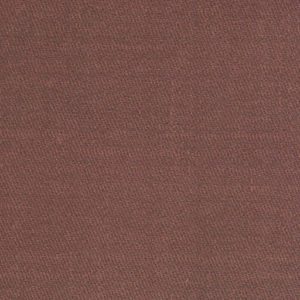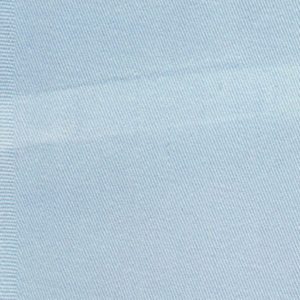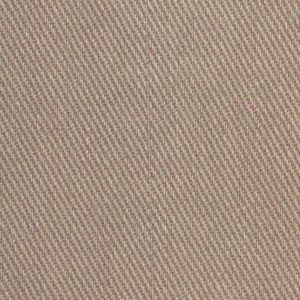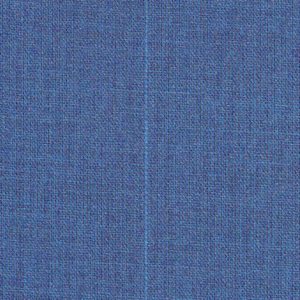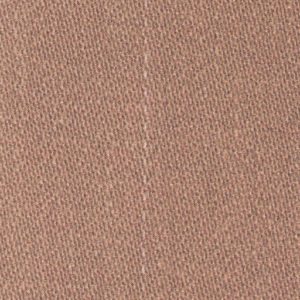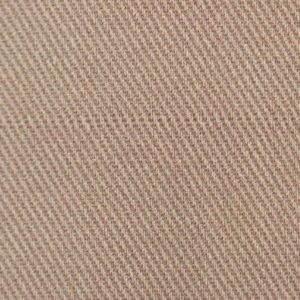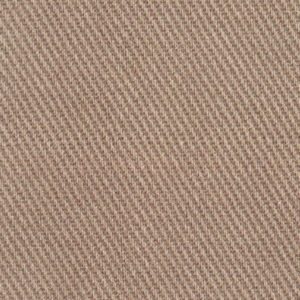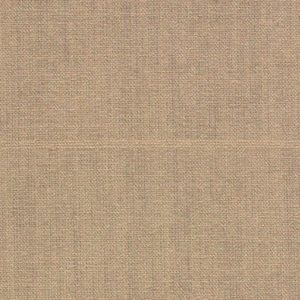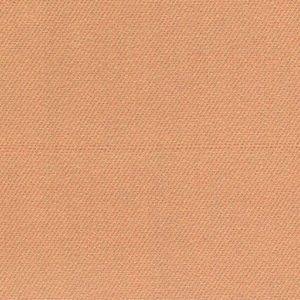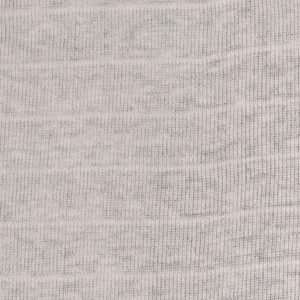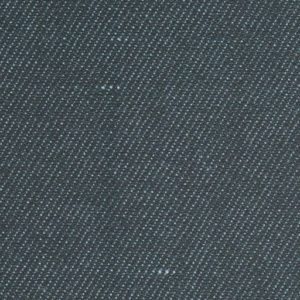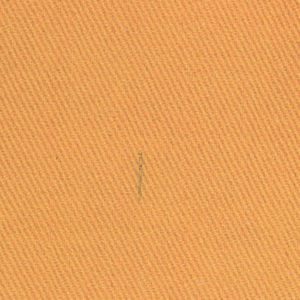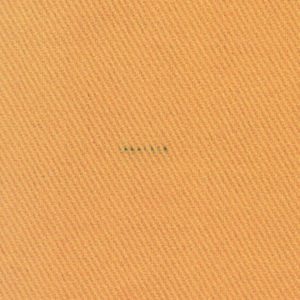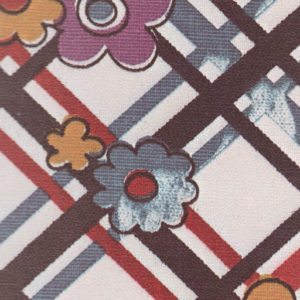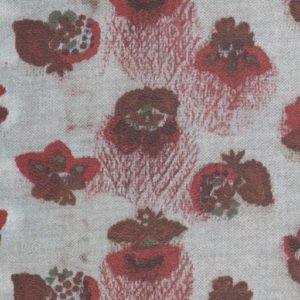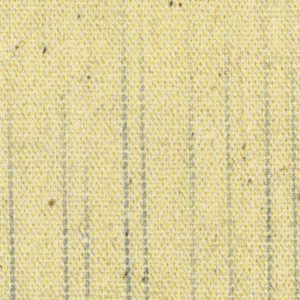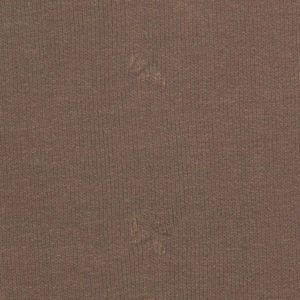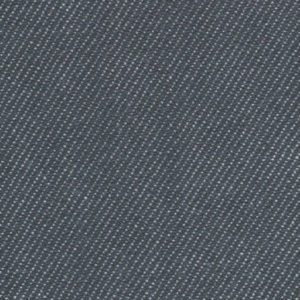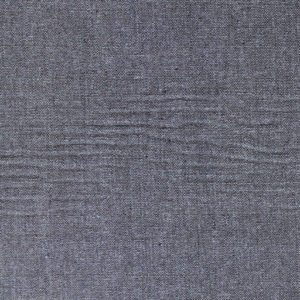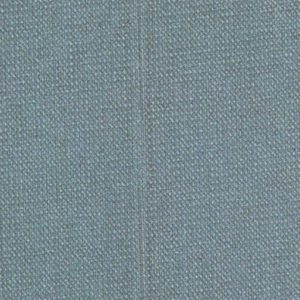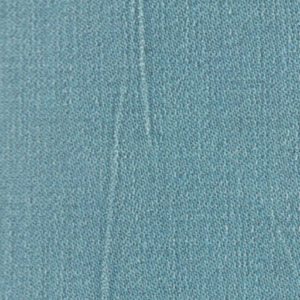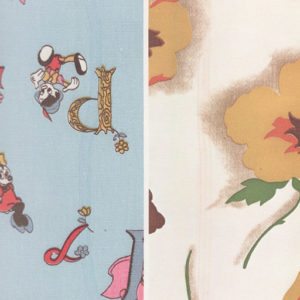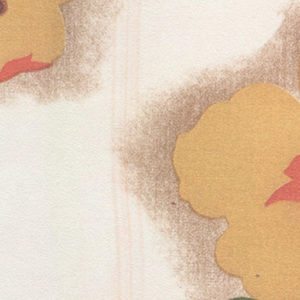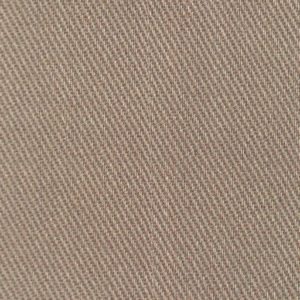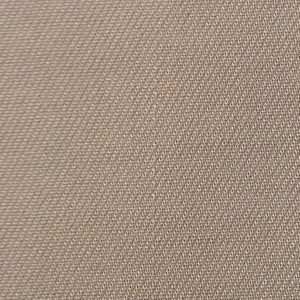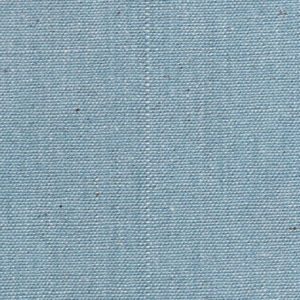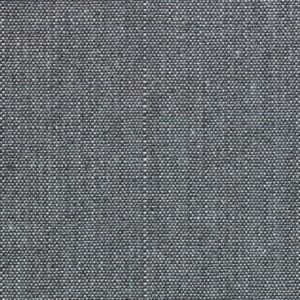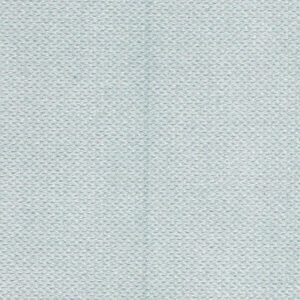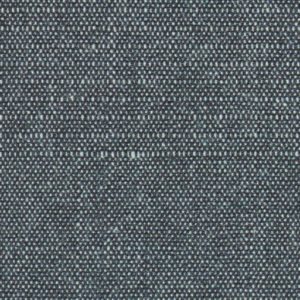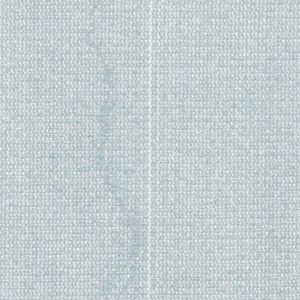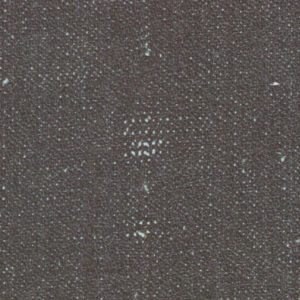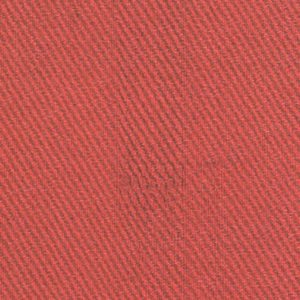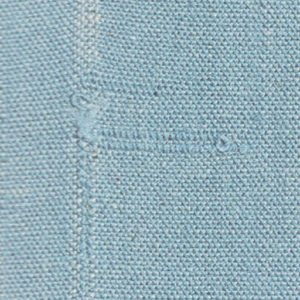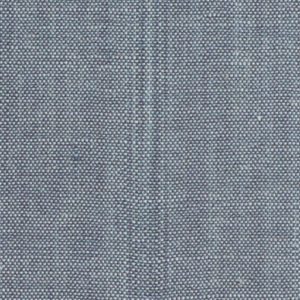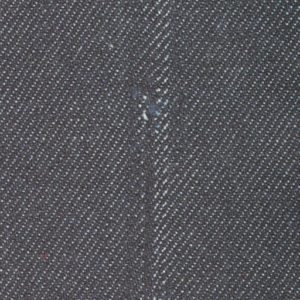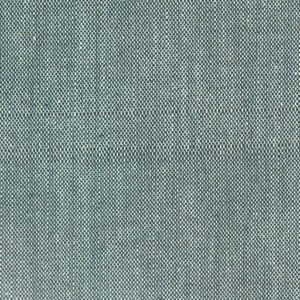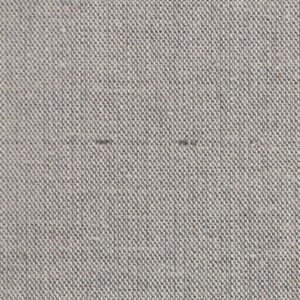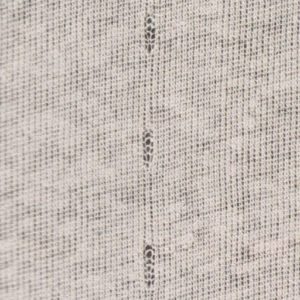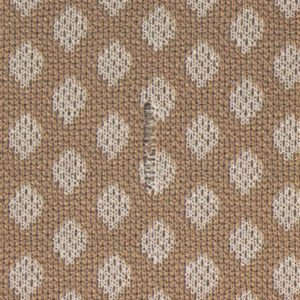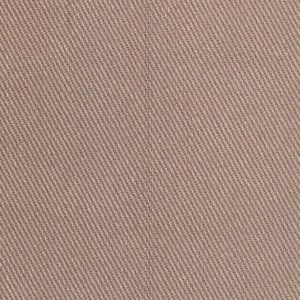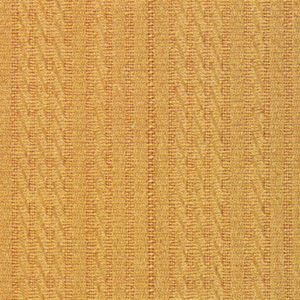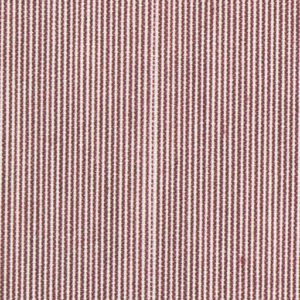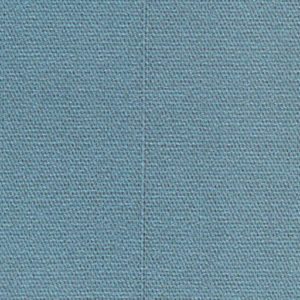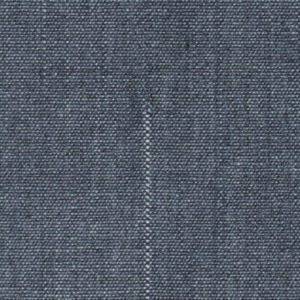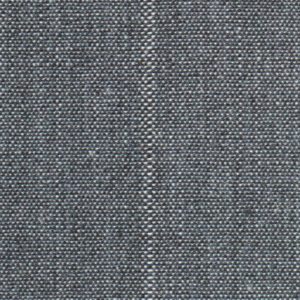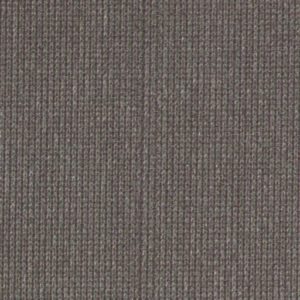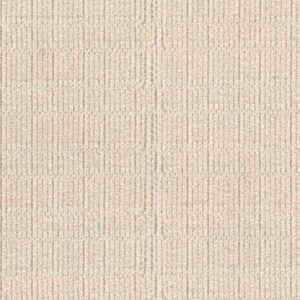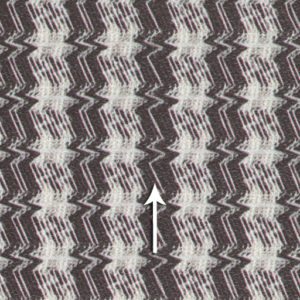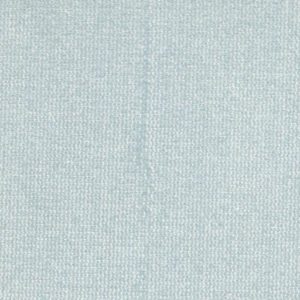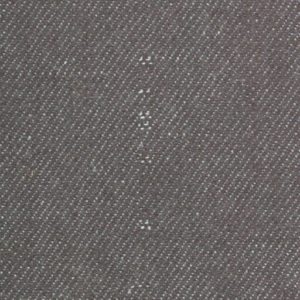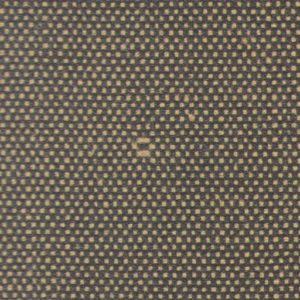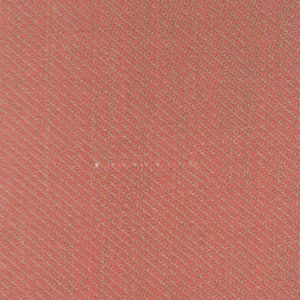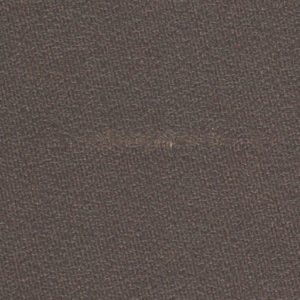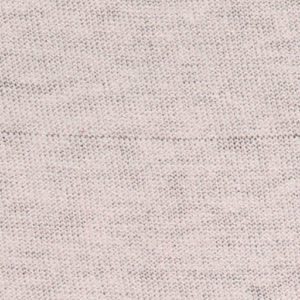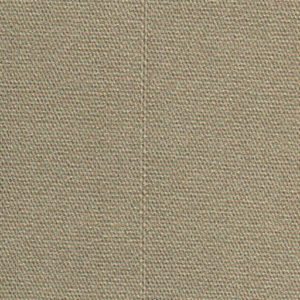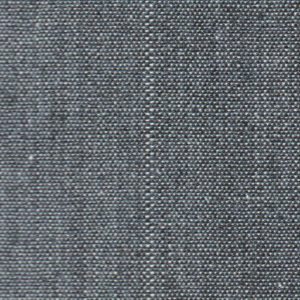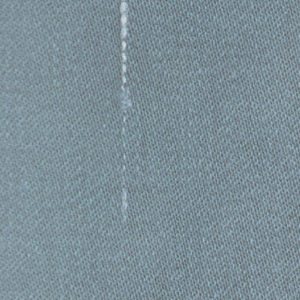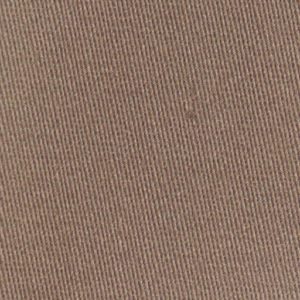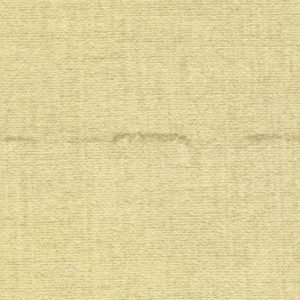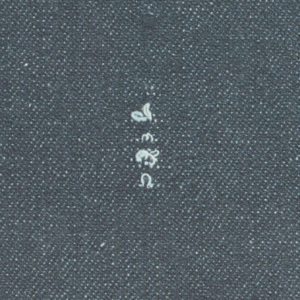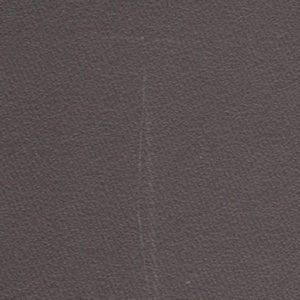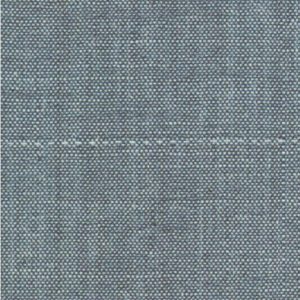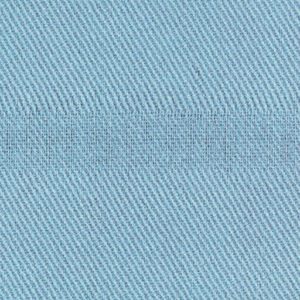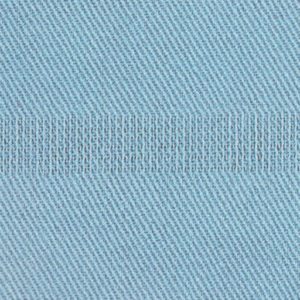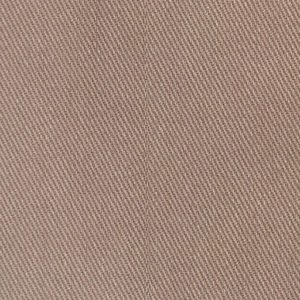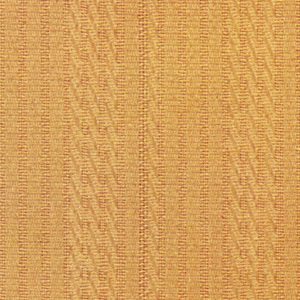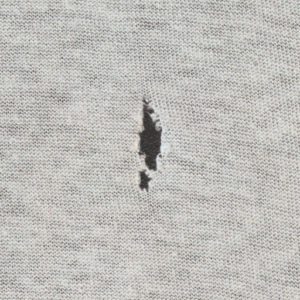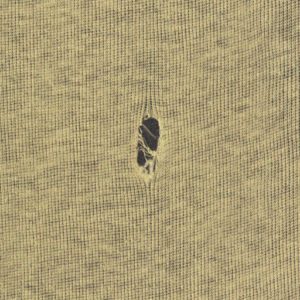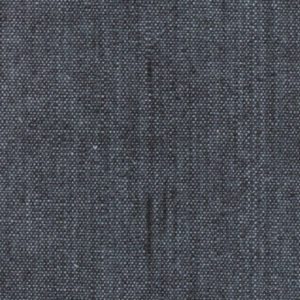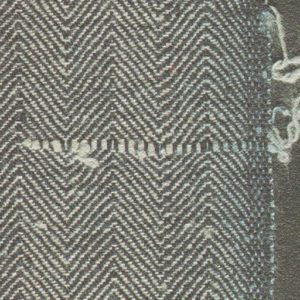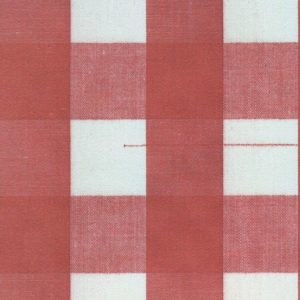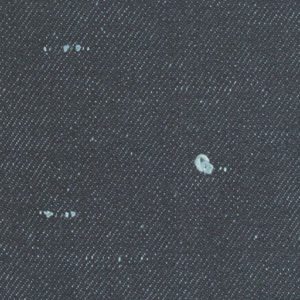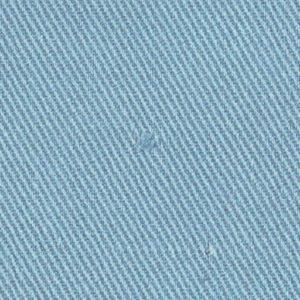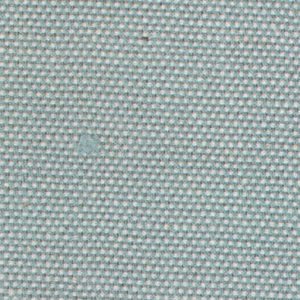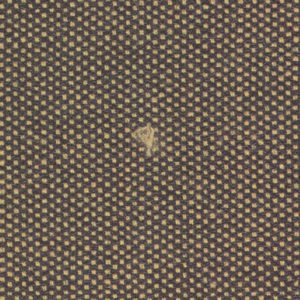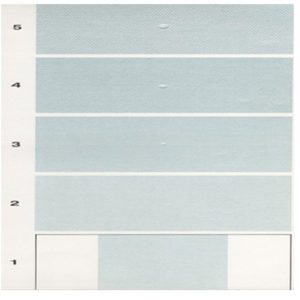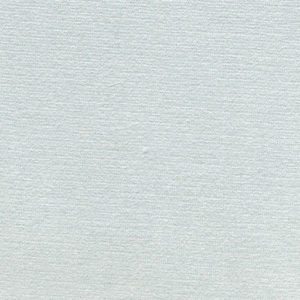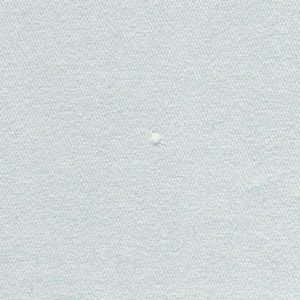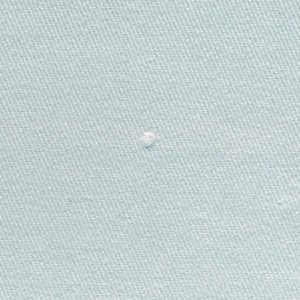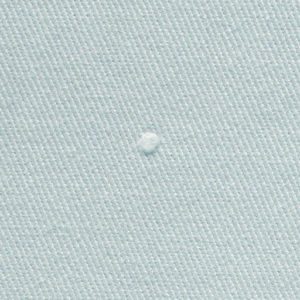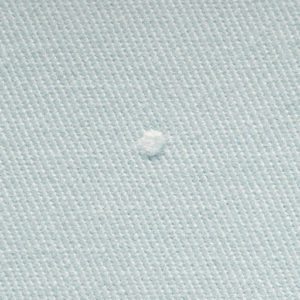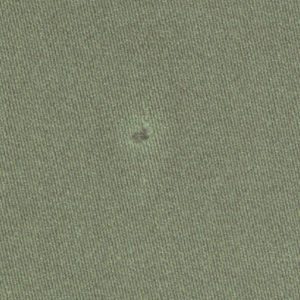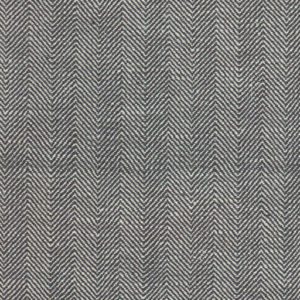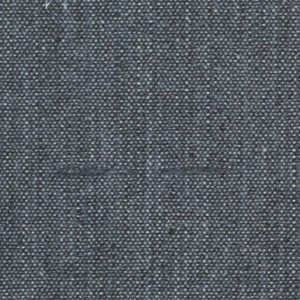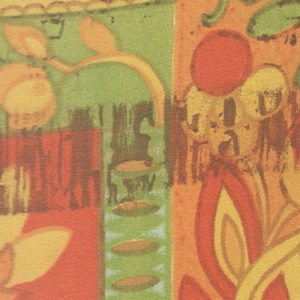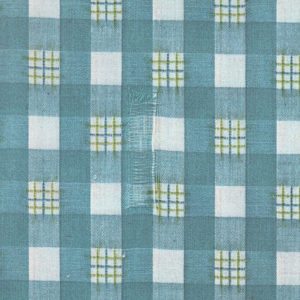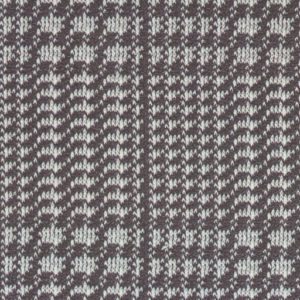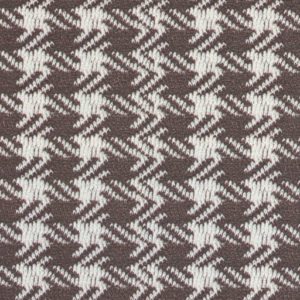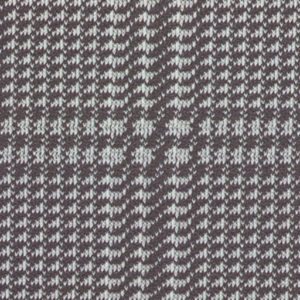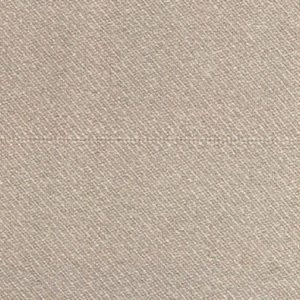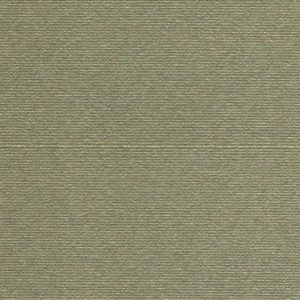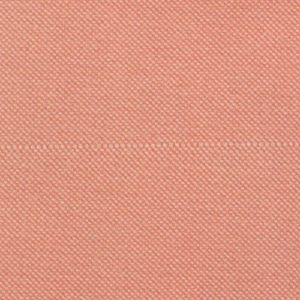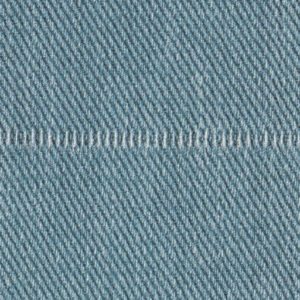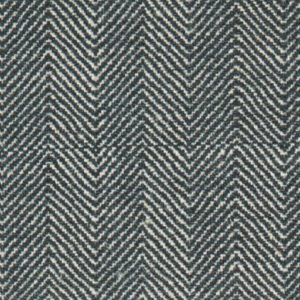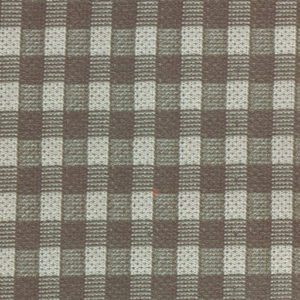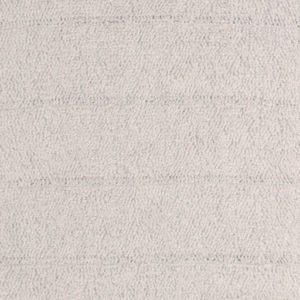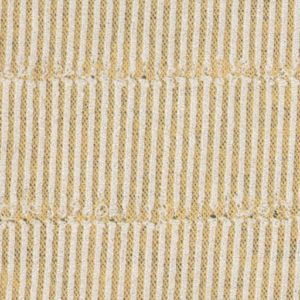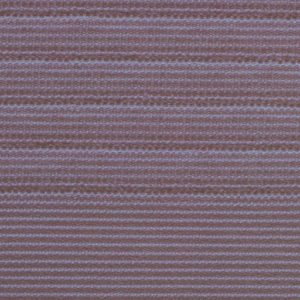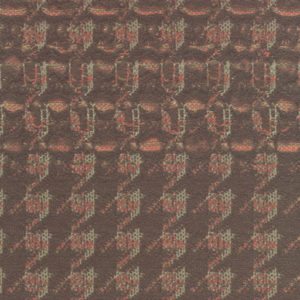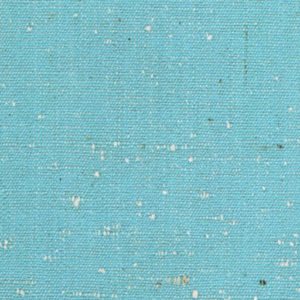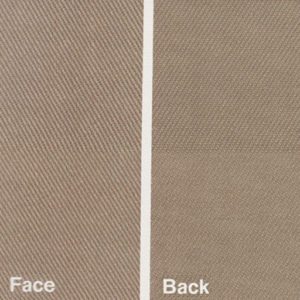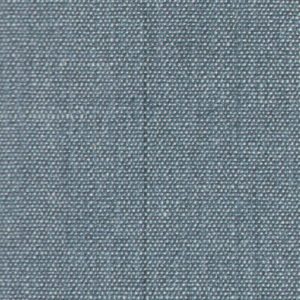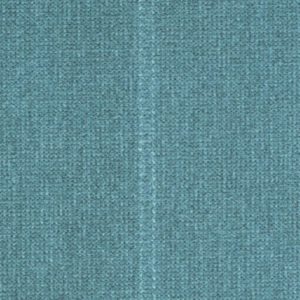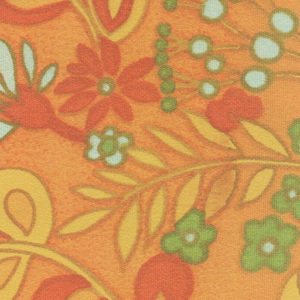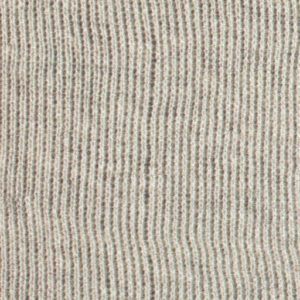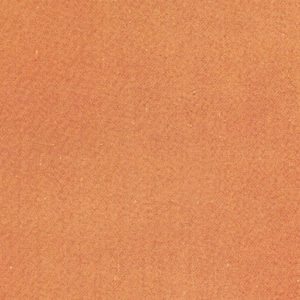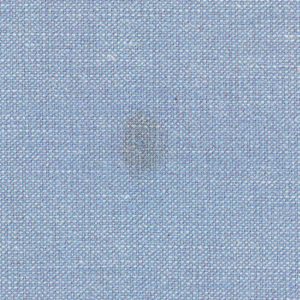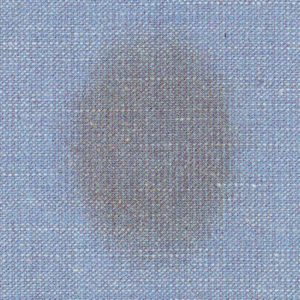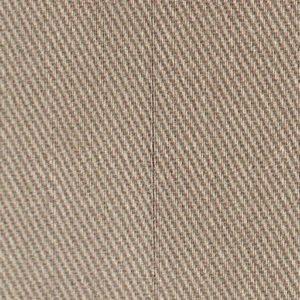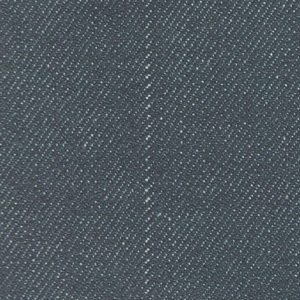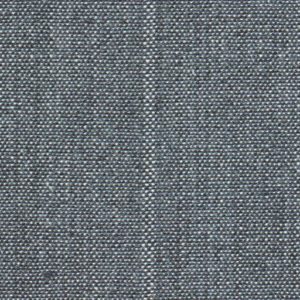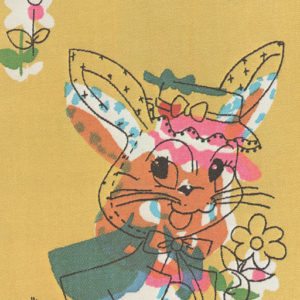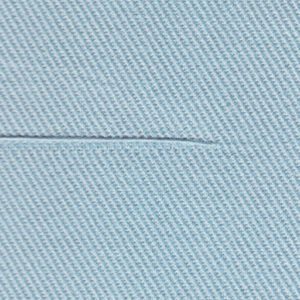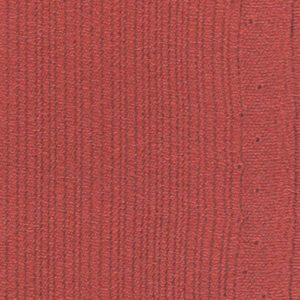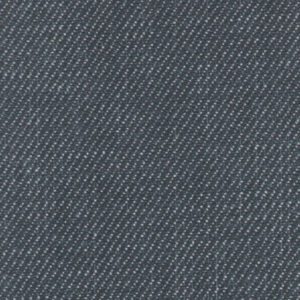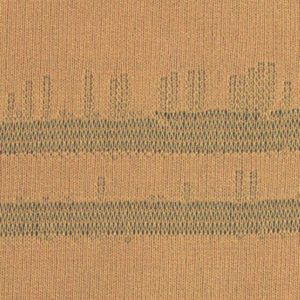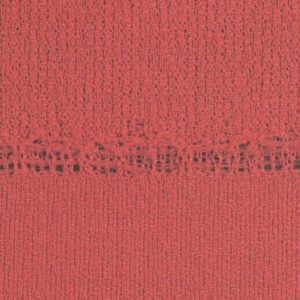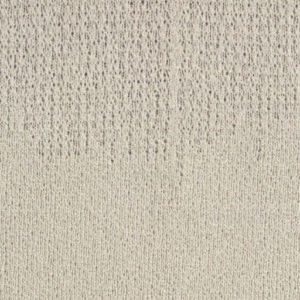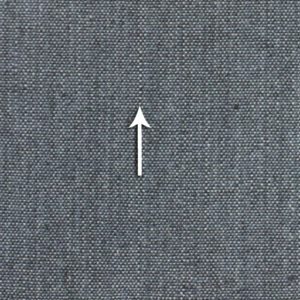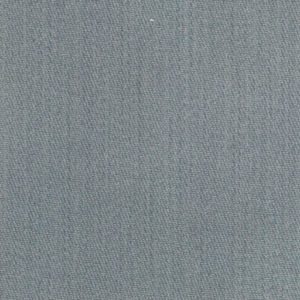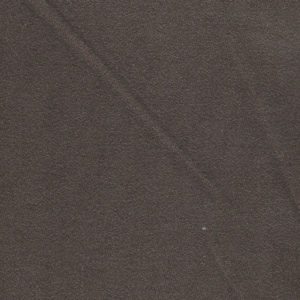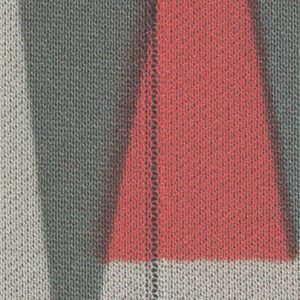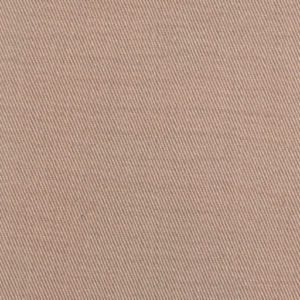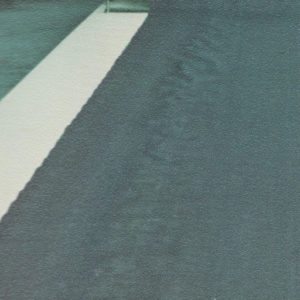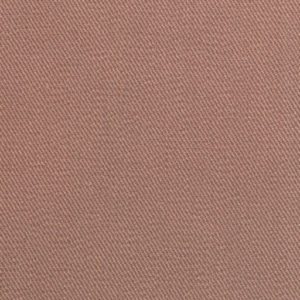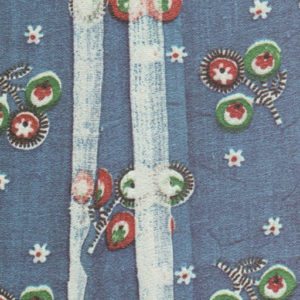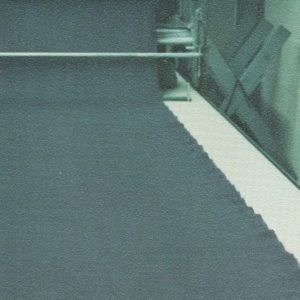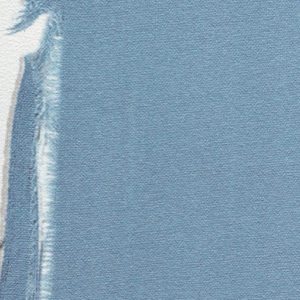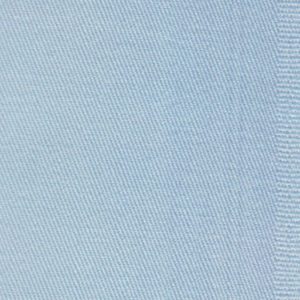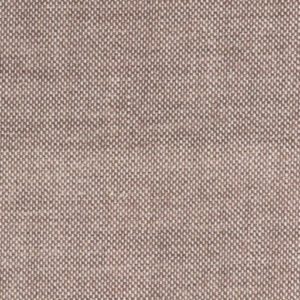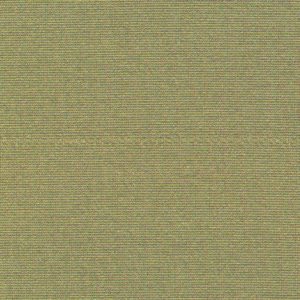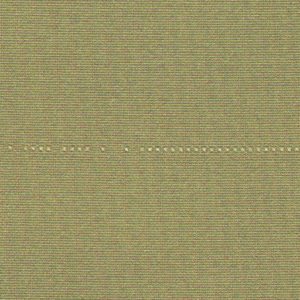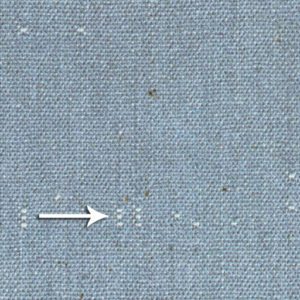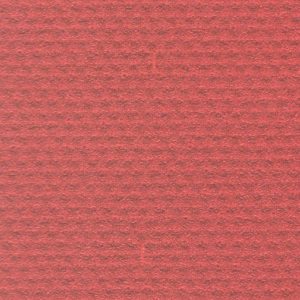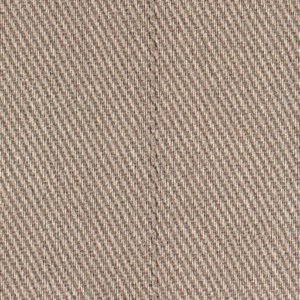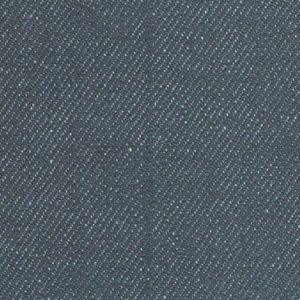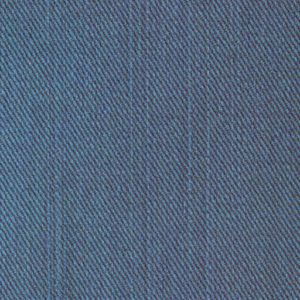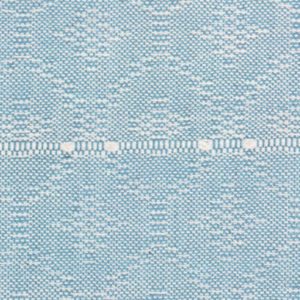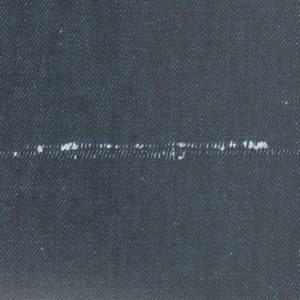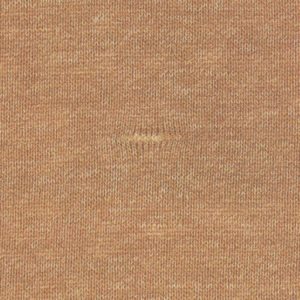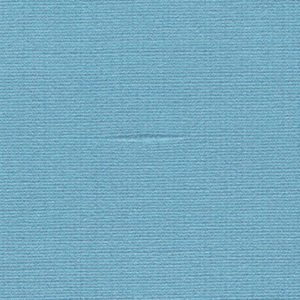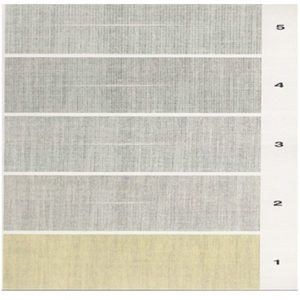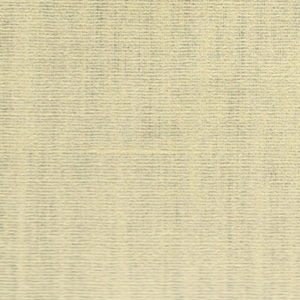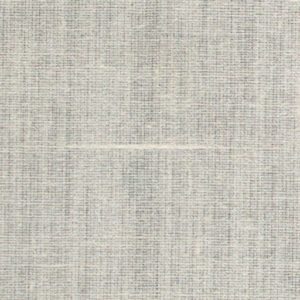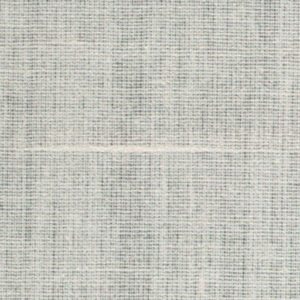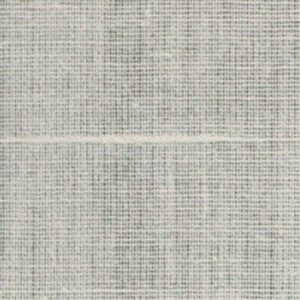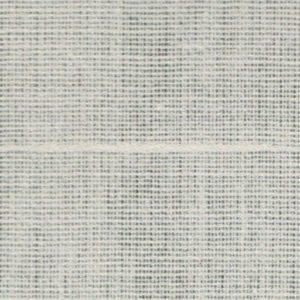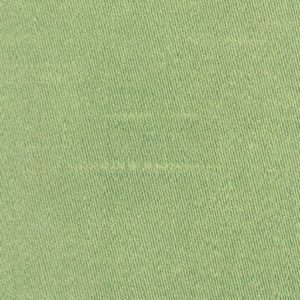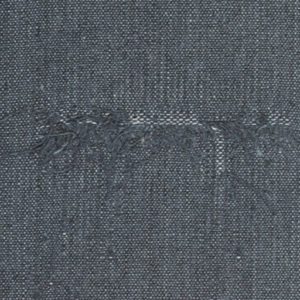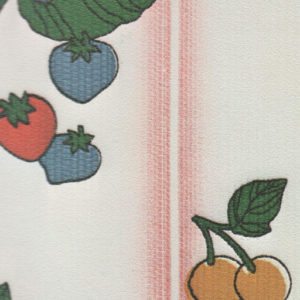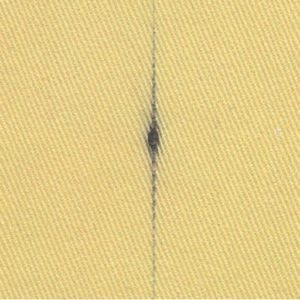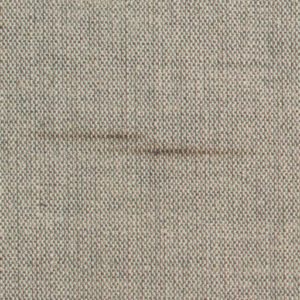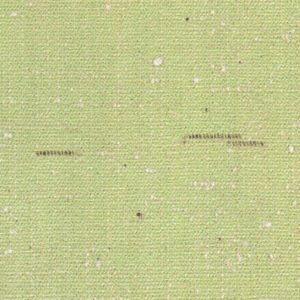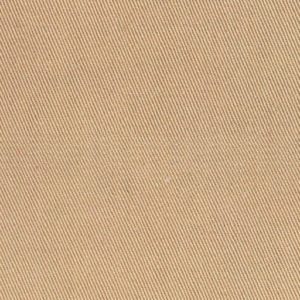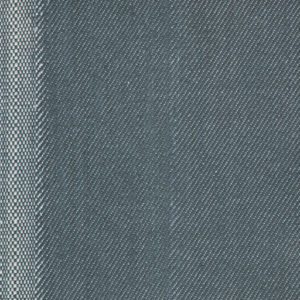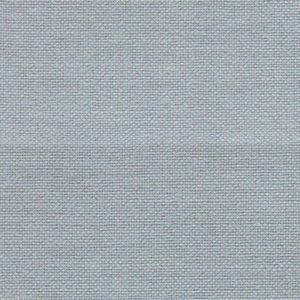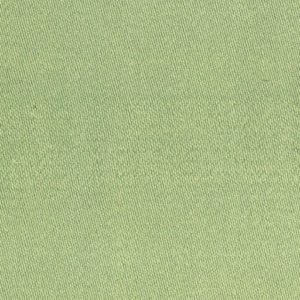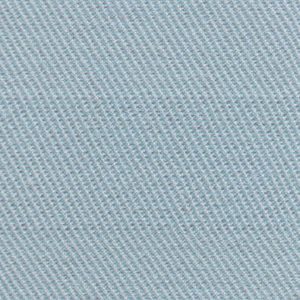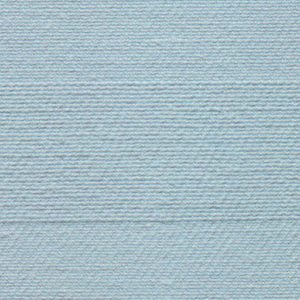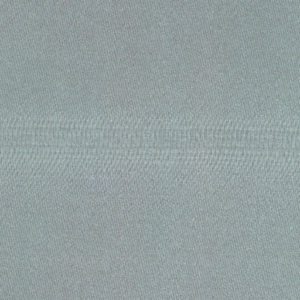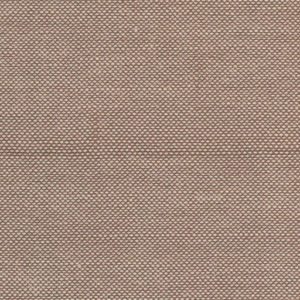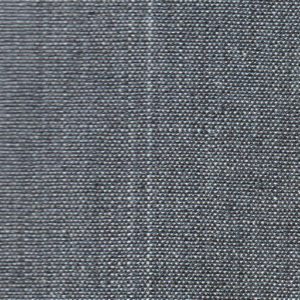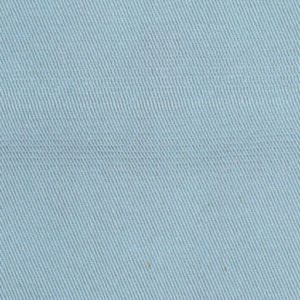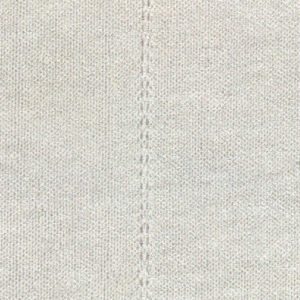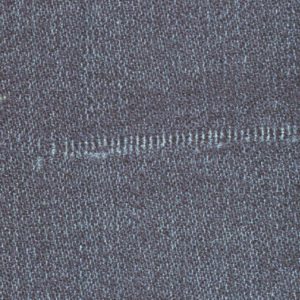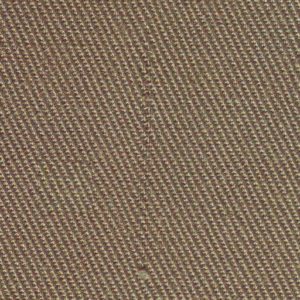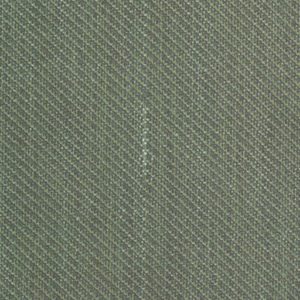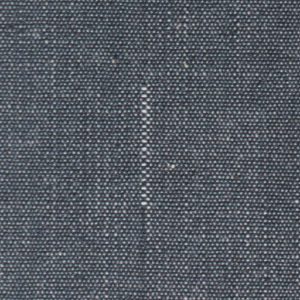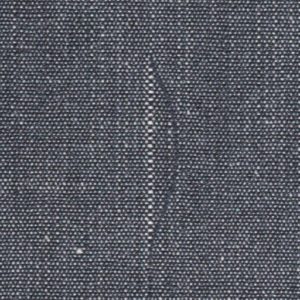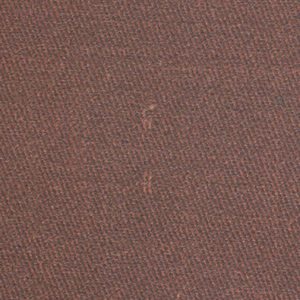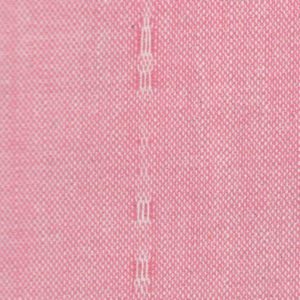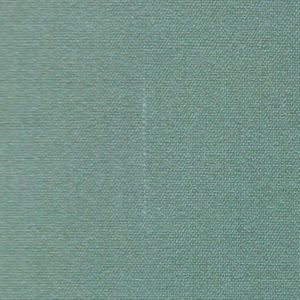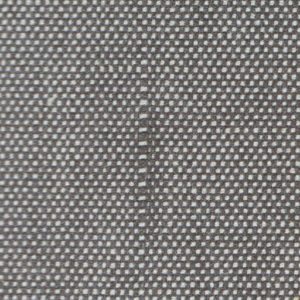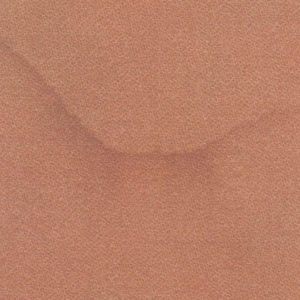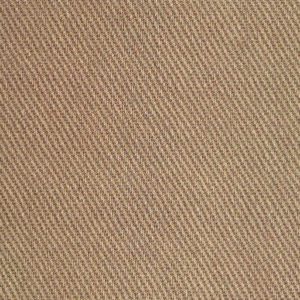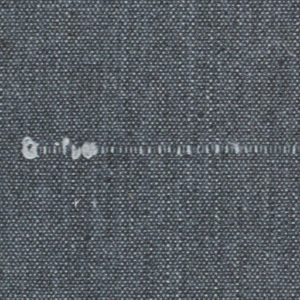- Defect Number :0001
- Defect Name :Slubs
- Defect Type :Isolated Defects
- Fabric Type :Shirting and Dress Goods – Plain Weave
- Description
-
Threshold Scale for Slubs — These graduations of slubs are designed to facilitate determination of thresholds-for-penalty in point grading. Scale of 1 to 5 with 1 being the lowest penalty and 5 being the highest penalty.
Severity: Minor
Category: III
0182
Standard Fabric Defect Glossary
- All Fabric Types
- Bottomweights – Plain Weave Derivatives
- Bottomweights – Sateen Derivatives
- Bottomweights – Twill Derivatives
- Denim Bottomweights – Indigo Dyed
- Denim Bottomweights – Piece Dyed
- Double Knit Fabrics
- Print Goods
- Shirting and Dress Goods – Chambray
- Shirting and Dress Goods – Oxford or Basket
- Shirting and Dress Goods – Plain Weave
- Single Knit Fabrics
- Warp Knit Fabrics
-
Back-Greige Seam Impression — This is a seam impression from the back greige or cushion fabric affecting printing by creating a thicker substrate.
Severity: Major
Category: VI
0158
Back-Greige Seam Impression![]()
-
Bias — A condition in wovens where the filling yarns are off-square to the warp end. In knits, the courses are off-square to the wales.
Severity: Major
Category: V
0140
Bias![]()
-
Birdseye — The result of erratic and unintentional tucking caused by a malfunctioning needle.
Severity: Major
Category: I
0178
Birdseye![]()
-
Bow — A condition in wovens where the filling yarns lie in an arc across the width of the fabric. In knits, the courses lie in an arc across the width of the fabric.
Severity: Major
Category: V
0139
Bow![]()
-
Broken Color Pattern — This defect is the result of a colored yarn being out of place in the creel.
Severity: Major
Category: IV
0188
Broken Color Pattern![]()
-
Broken End — This is the result of a warp end breaking and the excess yarn being woven into the filling direction of the fabric. This should have been cleaned up or manicured by the weaver when the broken end was repaired.
Severity: Major
Category: II
0080
Broken End![]()
-
Broken Pattern — The color pattern is broken by the insertion of two picks of white filling in the blue filling wise stripe. This is most likely due to the failure of a weaver to properly reset the pattern chain after servicing the loom for a missing or broken pick.
Severity: Major
Category: IV
0078
Broken Pattern![]()
-
Broken Pattern or Color Misdraw — This is a very subtle defect and is the result of a wrong draw in the color pattern. It is probably done during the tying on a new warp. If the tying-in machine misses one end of a particular color, it will break the pattern for the rest of the width of the fabric.
Severity: Major
Category: IV
0117
Broken Pattern or Color Misdraw![]()
-
Broken Pick — This description best suits the appearance of the defect; however, this is not a broken pick. The check in this fabric is achieved filling-wise by three picks of filling in one shed; that is, the shed stays open for three picks. The filling must be trapped by each selvage while the shed is open. In this instance, the tape selvage failed to trap the filling allowing it to be jerked back into the body of the fabric, resulting in two picks missing for a portion of the width.
Severity: Major
Category: II
0065
Broken Pick![]()
-
Broken Pick — This is where the pick is missing for a portion of the width of the fabric. In an Oxford weave, when one pick is missing, the picks on either side come together in the same shed giving the effect of a double pick.
Severity: Major
Category: II
0067
Broken Pick![]()
-
Broken Picks — This is the result of the filling yarn becoming snarled or entangled on the filling bobbin. It appears to have been broken and caught up several times while the loom continued to run. The 100% textured polyester yarn tends to fray badly when the yarn breaks.
Severity: Minor
Category: II
0059
Broken Picks![]()
-
Burl — This is the result of a jerked-in piece of yarn having been removed by pulling it from the selvage. While no yarns ruptured, an open place is left in the fabric.
Severity: Major
Category: II
0058
Burl![]()
-
Burl — This is the result of a piece of wild filling having been removed with a burling tool.
Severity: Major
Category: II
0099
Burl![]()
-
Burl — This is the result of a knot after burling.
Severity: Minor
Category: III
0104
Burl![]()
-
Burl Mark — This is the result of a slub or piece of wild filling having been removed with the use of a burling tool.
Severity: Major
Category: II
0095
Burl Mark![]()
-
Burl Mark — This is the result of a slub or piece of wild filling having been removed with the use of a burling tool.
Severity: Major
Category: II
0096
Burl Mark![]()
-
Buttonhole Selvage — This defect is the result of tension build up in the shuttle. It can be caused by several things: a crooked bobbin, bobbins not ringing properly, placing the tip of the bobbin too close to the shuttle eye, waste restrictions in the eye of the shuttle. The taut filling, pulling the selvage toward the body of the fabric, results in shed-splitting near the edge of the fabric. This defect may occur in isolated instances or continuously with the running out of each bobbin depending upon the cause.
Severity: Major
Category: I
0118
Buttonhole Selvage![]()
-
Chopped Filling — This defect is the result of alternately light and heavy filling caused by the eccentric behavior of a drafting roll, most likely the front roll of the drawframe. This defect occurs in isolated instances and generally is of one package duration.
Severity: Major
Category: II
0049
Chopped Filling![]()
-
Chopped Filling — This effect is the result of light and heavy filling caused by the eccentric behavior of a drafting roll, most likely the front roll of a drawframe. It has been accentuated in this warp-face fabric by having been sueded. This defect generally appears in isolated instances of one-bobbin duration.
Severity: Major
Category: II
0050
Chopped Filling![]()
-
Clip Mark — This mark is the result of a metal clip having been used to prevent or correct a selvage turndown.
Severity: Major
Category: V
0142
Clip Mark![]()
-
Coarse End — This end, being twice the size of the regular ends, is the unwanted result of two bobbins of roving running in spinning in what commonly is referred to as doubling.
Severity: Minor
Category: I
0023
Coarse End![]()
-
Coarse End — This end, being twice the size of the regular ends, is the unwanted result of two bobbins of roving running in spinning in what commonly is referred to as doubling.
Severity: Major
Category: I
0024
Coarse End![]()
-
Coarse End — This is a slightly coarse end that would not have been noticeable had it not been accentuated by sueding.
Severity: Minor
Category: I
0090
Coarse End![]()
-
Coarse Pick — Two coarse picks are inserted into consecutive sheds.
Severity: Major
Category: II
0055
Coarse Pick![]()
-
Coarse Pick — A single coarse pick is inserted.
Severity: Major
Category: II
0056
Coarse Pick![]()
-
Coarse Pick — Consists of three picks of coarse filling.
Severity: Major
Category: II
0060
Coarse Pick![]()
-
Coarse Pick — The filling yarn inserted is coarser than specified.
Severity: Major
Category: II
0062
Coarse Pick![]()
-
Coarse Yarn — This is the result of one feed of yarn being much coarser than normal for the fabric. The result is barré.
Severity: Major
Category: II
0172
Coarse Yarn![]()
-
Cockled Yarn — This fabric is constructed of a 100% cotton warp and 100% polyester filling. What appear to be tiny slubs is the result of polyester fibers that are too long for the roll settings on the spinning frame. This results in the fibers being caught by succeeding draft rolls before being turned loose by preceding ones; the fibers are stretched and then released to snap and curl (cockle).
Severity: Minor
Category: II
0054
Cockled Yarn![]()
-
Color Fly — This is the result of small amounts of colored fiber being spun into yarn of another stock. This can happen in the reworking of waste or where different fibers or colors are running in close proximity without adequate precaution being taken to prevent contamination.
Severity: Minor
Category: I
0134
Color Fly![]()
-
Color Fly — This is the result of small amounts of colored fiber being spun into yarn of another stock. This can happen in the reworking of waste or where different fibers or colors are running in close proximity without adequate precaution being taken to prevent contamination.
Severity: Minor
Category: III
0135
Color Fly![]()
-
Color Out — This is the result of color running low in the reservoir.
Severity: Major
Category: VI
0159
Color Out![]()
-
Color Smear — This is the result of the color being smeared out of the engraved design.
Severity: Major
Category: VI
0160
Color Smear![]()
-
Color Spot — This is the result of one beam of a slasher set being spotted with indigo. The spot is spread out according to the proportion of that beam to the total number of beams in the set. In this case, one of eight.
Severity: Major
Category: I
0131
Color Spot![]()
-
Compactor Creases — These occurred during compacting, which is a mechanical process designed to reduce shrinkage and give stability to the fabric. This fabric is passed through the compactor in flat tube form, and wrinkles on the folded selvage were compressed into hard creases.
Severity: Major
Category: V
0181
Compactor Creases![]()
-
Correct Cover — Proper settings allow the warp yarn to dominate and form smooth surface of accentuated twill lines.
Severity: -
Category: IV
0124
Correct Cover![]()
-
Corrugation — This defect is caused by the sanforizer blanket not properly controlling the compacting of the fabric during sanforization. Generally, it is caused by the blanket not being tight enough or a soft place in the blanket. When it is caused by a defective blanket, it will repeat at regular intervals.
Severity: Major
Category: V
0128
Corrugation![]()
-
Crease Streak — This is the result of creased fabric passing through squeeze rolls in the dyeing operation and the crease then being removed in a subsequent process.
Severity: Major
Category: V
0136
Crease Streak![]()
-
Crease Sueded — This is the result of a creased fabric passing through the sueder. The precision set sueder roll cuts deeper into the creased areas due to the extra thickness.
Severity: Major
Category: V
0137
Crease Sueded![]()
-
Doctor Blade Streak — This is the result of a bent or damaged doctor blade not cleaning properly, allowing color to escape.
Severity: Major
Category: VI
0152
Doctor Blade Streak![]()
-
Doctor Blade Streak — This is the result of a bent or damaged doctor blade not cleaning properly, allowing color to escape.
Severity: Major
Category: VI
0153
Doctor Blade Streak![]()
-
Double End — This defect is the result of an extra end being woven into the fabric. The extra end creates small flat distortions in the twill line.
Severity: Minor
Category: I
0022F
Double End![]()
-
Double End — This defect is the result of an extra end being woven into the fabric. The extra end creates small flat distortions in the twill line.
Severity: Minor
Category: I
0022B
Double End![]()
-
Double End — This defect is the result of an extra end being woven double with a regular end of the fabric.
Severity: Major
Category: I
0027
Double End![]()
-
Double End — This defect is the result of an extra end being woven double with a regular end of the fabric.
Severity: Major
Category: I
0034
Double End![]()
-
Double End — While this appears as a dark end, it actually is caused by two ends of a finer denier being knit together as one.
Severity: Major
Category: I
0170
Double End![]()
-
Double Picks — This is the result of one filling feed on a four-feed Sulzer weaving machine picking up the end from the reserve supply package and pulling in a double filling on every fourth pick. This will continue to run until noticed by the operator.
Severity: Major
Category: II
0073
Double Picks![]()
-
Dragging End — This is the result of an end being knit under erratic and excessive tension. This quite often is caused by ends being entangled and/or trapped on the warp beam.
Severity: Major
Category: I
0165
Dragging End![]()
-
Drawback (Small) — This defect is the result of a mat-up behind the harness that causes the ends to run taut and force the undyed filling to dominate the cover of the fabric.
Severity: Minor
Category: I
0107
Drawback (Small)![]()
-
Drawback (Small) — This is a similar defect but in a piece-dyed fabric. In both cases, the mat-up is removed before an end ruptures. There is always a corresponding slackness of ends when the restriction is removed.
Severity: Minor
Category: I
0108
Drawback (Small)![]()
-
Drawbacks — These are defects caused by excessive tension gradually applied by some abnormal restriction. When the restriction is removed, the excess slack is woven gradually into the fabric. Drawbacks may vary in length from inches to yards and often result in ruptured ends.
Severity: Major
Category: I
0087
Drawbacks![]()
-
Drawbacks — These are defects caused by excessive tension gradually applied by some abnormal restriction. When the restriction is removed, the excess slack is woven gradually into the fabric. Drawbacks may vary in length from inches to yards and often result in ruptured ends.
Severity: Major
Category: I
0088
Drawbacks![]()
-
Drawbacks — These are defects caused by excessive tension gradually applied by some abnormal restriction. When the restriction is removed, the excess slack is woven gradually into the fabric. Drawbacks may vary in length from inches to yards and often result in ruptured ends.
Severity: Major
Category: I
0089
Drawbacks![]()
-
Dropped Picks — This is the result of the filling insertion mechanism on a shuttleless loom not holding, thus releasing the filling yarn too soon. This allows the yarn to snap into the body, leaving a missing pick part way across the width of the fabric.
Severity: Major
Category: II
0038
Dropped Picks![]()
-
Dropped Pick — This is the result of the filling insertion mechanism on a shuttleless loom not holding, thus releasing the filling yarn too soon. This allows the yarn to snap into the body, leaving a missing pick part way across the fabric. The released yarn then weaves into the fabric in a tangled mass and appears as a kinked or wild yarn.
Severity: Major
Category: II
0039
Dropped Picks![]()
-
Dropped Stitches — This is the result of stitches failing to form due to a malfunctioning needle or jack.
Severity: Major
Category: I
0189
Dropped Stitches![]()
-
Dropped Stitches — This is the result of stitches failing to form due to a malfunctioning needle or jack.
Severity: Major
Category: I
0190
Dropped Stitches![]()
-
End Out — The end out leaves a thin dark line on the face of the fabric with short filling floats on the back. The ladder-like effect of the filling floats is a quick and easy way to identify this defect.
Severity: Major
Category: I
0014
End Out![]()
-
End Out — This end out also takes place in the plain weave area of the fabric and appears as a thin place and a double end. When one end in a plain wave is missing, the adjacent ends fall together and weave as one.
Severity: Major
Category: I
0016
End Out![]()
-
End Out — The cord effect of this fabric is attained by two red ends weaving plain between each end of 2/ply white. The 2/ply white end also weaves plain with adjoining red ends. The defect is the result of one red end missing.
Severity: Major
Category: I
0017
End Out![]()
-
End Out — The end out appearance results with two ends on either side coming together and weaving as one giving the appearance of an end out.
Severity: Major
Category: I
0025
End Out![]()
-
End Out — This defect is the result of a loom continuing to run after an end is broken.
Severity: Major
Category: I
0028
End Out![]()
-
End Out — The end out appearance results with two ends on either side coming together and weaving as one giving the appearance of an end out.
Severity: Major
Category: I
0033
End Out![]()
-
End Out — This defect is the result of the knitting machine continuing to run with an end missing. The back of the fabric is shown, since the defect is clearly seen on the back and not the face.
Severity: Major
Category: I
0162
End Out![]()
-
End Out — This defect is the result of the knitting machine continuing to run with an end missing.
Severity: Major
Category: I
0163
End Out![]()
-
End Out — This defect is the result of the knitting machine continuing to run with an end missing.
Severity: Major
Category: I
0164
End Out![]()
-
End Out and Straying End — This is the result of a broken end straying over and being knit irregularly into another area of the fabric.
Severity: Major
Category: I
0166
End Out and Straying End![]()
-
Filling Floats — This is the result of a knot with long ears intermittently interfering with the interlacing of the warp and filling as it makes its way through the harness to the fell of the cloth.
Severity: Major
Category: I
0086
Filling Floats![]()
-
Filling Floats (see also shed-splitting, undershots, and overshots) — Picks of filling extending unbound over or under warp ends with which they should have been interlaced.
Severity: Minor
Category: III
0113
Filling Floats![]()
-
Filling Slub — Filling yarn with a short thick place in a yarn.
Severity: Minor
Category: II
0111
Filling Slub![]()
-
Filling Slub — Filling yarn with a short thick place in a yarn.
Severity: Minor
Category: II
0112
Filling Slub![]()
-
Fine Yarn — Loose Course — This defect is the result of a fine yarn; however, the appearance is very similar to that of a loose course. Both defects appear as fine width-wise cracks. This view is the back of the fabric.
Severity: Major
Category: II
0191
Fine Yarn - Loose Course![]()
-
Flat or Harness Misdraw — This harness misdraw results in two ends weaving as one and opposing two other ends weaving as one. This is commonly referred to as a "flat."
Severity: Major
Category: I
0026
Flat or Harness Misdraw![]()
-
Flat or Harness Misdraw — This harness misdraw results in two ends weaving as one and opposing two other ends weaving as one. This is commonly referred to as a "flat."
Severity: Major
Category: I
0032
Flat or Harness Misdraw![]()
-
Foreign Fiber — This is the result of a piece of polyester waste being spun into a cotton warp yarn.
Severity: Major
Category: I
0083
Foreign Fiber![]()
-
Fuzz Balls — This is the result of insufficient size on the warp yarns (often referred to as a soft warp) lowering their resistance to the abrasion of the harness and reed. The fibers are broken loose and pushed back on the yarn forming balls of fuzz encircling the yarn. This contributes to very poor weaving conditions and often necessitates the removal of the warp from the loom.
Severity: Major
Category: III
0121
Fuzz Balls![]()
-
Gouts — This defect is the result of masses of accumulated short fiber (fly) being drawn undrafted into the filling yarn during the spinning process. Gouts differ from slubs in that they are characterized by a lumpy appearance while slubs generally are symmetrical.
Severity: Major
Category: II
0097
Gouts![]()
-
Hang Pick or Loopy Filling — This defect is the result of the filling hanging on the knot which appears approximately one-half inch above the filling loops in the photograph. During weaving, the filling hangs on the knot for a split second until freed by the stroke of the reed.
Severity: Minor
Category: III
0106
Hang Pick or Loopy Filling![]()
-
Hang Thread — This is the result of a weaver failing to clip the excess thread after repairing a broken end and the cloth inspector failing to remove it in the final inspection. The thread on the face of the fabric restricts the penetration of dye into the fabric beneath it resulting in a light streak.
Severity: Major
Category: I
0091
Hang Thread![]()
-
Harness Balk — This defect is the result of one harness of this six-harness plain weave failing to move in its prescribed sequence, causing a pick of filling to float over certain warp ends with which it should have interlaced.
Severity: Major
Category: II
0066
Harness Balk![]()
-
Harness Breakdown — This is the result of harness straps breaking on a conventional loom. This view shows the effect of the harness staying down and the warp floats on the back of the fabric.
Severity: Major
Category: II
0035
Harness Breakdown![]()
-
Harness Breakdown — This is the result of harness straps breaking on a conventional loom. This view shows the effect of the harness staying up and the warp floats on the face of the fabric.
Severity: Major
Category: II
0036
Harness Breakdown![]()
-
Harness Misdraw — This is the result of two ends being drawn wrong through the harness. Instead of the 1-2-3-4 draw, they are drawn 1-3-2-4. This distorts the weave and breaks the twill line.
Severity: Major
Category: I
0013
Harness Misdraw![]()
-
Harness Misdraw — This is the result of ends being drawn wrong through the harness. This takes place in a plain weave section of the fabric resulting in what is commonly called a "flat."
Severity: Major
Category: I
0015
Harness Misdraw![]()
-
Hole — This is where the fabric has been pulverized during compaction. This is the back of the fabric.
Severity: Major
Category: V
0183
Hole![]()
-
Hole — This is the result of a lint ball interfering with the normal interloping of the yarn.
Severity: Major
Category: III
0184
Hole![]()
-
Indigo Dye Range Stop — This is the result of a machine stop on an indigo range. In this case, one end on the indigo range contains approximately one-eight of the total ends in the loom warp. This condition exists in a filling wise band of approximately fifteen inches.
Severity: Major
Category: I
0149
Indigo Dye Range Stop![]()
-
Jerk-in — This is the result of an extra piece of filling yarn having been jerked by the shuttle part way into the body of the fabric.
Severity: Major
Category: II
0046
Jerk-in![]()
-
Jerk-in — This is the result of an extra piece of filling having been jerked by the shuttle from the selvage part way into the body of the fabric.
Severity: Major
Category: II
0094
Jerk-in![]()
-
Kinky Filling — This defect is the result of the filling yarn twisting on itself. Causes are shuttle not boxing properly, a malfunctioning filling fork, too much power on the picker stick, excessive twist in the yarn, inadequate setting of filling twist, etc. Kinky filling is most common approximately eight to ten inches in the selvage and is erratic in its placement. When caused by a center filling fork, the kinks will appear in a line down the center of the fabric.
Severity: Major
Category: II
0120
Kinky Filling![]()
-
Knot — This is a spooler knot.
Severity: Minor
Category: III
0103
Knot![]()
-
Knot — A place where two ends of yarn have been tied together, and the tails of the knot are protruding from the surface.
Severity: Minor
Category: III
0114
Knot![]()
-
Knot — A place where two ends of yarn have been tied together, and the tails of the knot are protruding from the surface.
Severity: Minor
Category: III
0116
Knot![]()
-
Threshold Scale for Knots — These graduations of slubs are designed to facilitate determination of thresholds-for-penalty in point grading. Scale of 1 to 5 with 1 being the lowest penalty and 5 being the highest penalty.
Severity: Minor
Category: III
0007
Knots![]()
-
Threshold Scale for Knots — These graduations of slubs are designed to facilitate determination of thresholds-for-penalty in point grading. Value of 1.
Severity: Minor
Category: III
0008
Knots![]()
-
Threshold Scale for Knots — These graduations of slubs are designed to facilitate determination of thresholds-for-penalty in point grading. Value of 2.
Severity: Minor
Category: III
0009
Knots![]()
-
Threshold Scale for Knots — These graduations of slubs are designed to facilitate determination of thresholds-for-penalty in point grading. Value of 3.
Severity: Minor
Category: III
0010
Knots![]()
-
Threshold Scale for Knots — These graduations of slubs are designed to facilitate determination of thresholds-for-penalty in point grading. Value of 4.
Severity: Minor
Category: III
0011
Knots![]()
-
Threshold Scale for Knots — These graduations of slubs are designed to facilitate determination of thresholds-for-penalty in point grading. Value of 5.
Severity: Minor
Category: III
0012
Knots![]()
-
Knots with Halos — These are spooler knots. During the dyeing process the knots, being the last to dry, tend to wick the dye from the surrounding area, leaving halos.
Severity: Minor
Category: III
0105
Knots with Halos![]()
-
Loom Bar — This is a defect characterized by a change of shade due to a build up of tension in the loom shuttle just before a filling change. There is always a difference in tension between a full bobbin and an almost empty one; however, this condition can be accentuated by a restriction in the shuttle eye, a weak or badly worn shuttle spring, a bobbin not ringing properly, a crooked bobbin, etc. It can be repetitive at each filling change or isolated depending on the exact cause.
Severity: Major
Category: II
0081
Loom Bar![]()
-
Loom Waste — This is the result of accumulated fly waste having been blown into or pulled into the loom shed by the shuttle or filling yarn.
Severity: Minor
Category: II
0101
Loom Waste![]()
-
Print Machine Stop - This is the result of excess print paste smudging the fabric during the machine stop.
Severity: Major
Category: VI
0157
Machine Stop![]()
-
Mat-up — This defect is the result of several ends breaking and entangling so as to interfere with the proper interlacing of ends and picks.
Severity: Major
Category: III
0093
Mat-up![]()
-
Misdraw (Color) — This is usually the result of an end being threaded or drawn into the wrong guide bar. It may also result from mixing yarn. In some instances, it can be traced to a creeling error in warping, causing an end to appear out of position on the warp beam.
Severity: Major
Category: I
0167
Misdraw (Color)![]()
-
Misdraw (Color) — This is usually the result of an end being threaded or drawn into the wrong guide bar. It may also result from mixing yarn. In some instances, it can be traced to a creeling error in warping, causing an end to appear out of position on the warp beam.
Severity: Major
Category: I
0168
Misdraw (Color)![]()
-
Misdraw (Color) — This is usually the result of an end being threaded or drawn into the wrong guide bar. It may also result from mixing yarn. In some instances, it can be traced to a creeling error in warping, causing an end to appear out of position on the warp beam.
Severity: Major
Category: I
0169
Misdraw (Color)![]()
-
Mispick — This is the result of one pick missing from the fabric. Close examination of a spun-yarn fabric will show the two separate yarns; however, in a filament fabric, the two merge and appear as one coarse yarn.
Severity: Major
Category: II
0068
Mispick![]()
-
Mispick — This is the result of one pick missing from the fabric. This mispick looks identical to a coarse pick. This is because in a plain weave when one pick is missing, the picks on either side come together in the same shed. Close examination of a spun-yarn fabric will show the two separate yarns; however, in a filament fabric, the two merge and appear as one coarse yarn.
Severity: Major
Category: II
0069
Mispick![]()
-
Mispick — This defect is the result of one pick of filling missing from the fabric. The appearance of this defect is affected by the weave.
Severity: Major
Category: II
0070
Mispick![]()
-
Mispick — This defect is the result of one pick of filling missing from the fabric. The appearance of this defect is affected by the weave.
Severity: Major
Category: II
0071
Mispick![]()
-
Mispick — This defect is the result of one pick of filling missing from the fabric. The appearance of this defect is affected by the weave.
Severity: Major
Category: II
0072
Mispick![]()
-
Miss-selection — This is where the pattern design has been corrupted by the random dropping of stitches. It could be the result of sticking jacks or erratic behavior of the yarn feed.
Severity: Major
Category: IV
0187
Miss-selection![]()
-
Missing Yarn — This is the result of a machine continuing to run with one yarn broken and/or missing. The result is barré. .
Severity: Major
Category: II
0173
Missing Yarn![]()
-
Missing Yarn — This is the result of a machine continuing to run with one yarn broken and/or missing. The result is barré.
Severity: Major
Category: II
0175
Missing Yarn![]()
-
Missing Yarn — This is the result of a machine continuing to run with one yarn broken and/or missing. The result is barré. .
Severity: Major
Category: II
0176
Missing Yarn![]()
-
Missing Yarn — This is the result of a machine continuing to run with one feed of yarn missing.
Severity: Major
Category: II
0177
Missing Yarn![]()
-
Mixed Filling — The nubby effect, which is a desired characteristic of this fabric, is lost or greatly reduced by the difference in the filling at the top of the photograph. This constitutes a defect.
Severity: Major
Category: II
0052
Mixed Filling![]()
-
Mixed Filling (also Filling Band) — This defect is the result of a bobbin of lightweight filing; the twill line is subdued and the shade is affected. Since it is a mixed filling problem on this 3/1 left hand twill, the defect is more noticeable from the back.
Severity: Major
Category: II
0053
Mixed Filling![]()
-
Mixed Yarn — This is one warp end of an all-cotton yarn running in a 50/50 cotton/polyester blend. In this fabric, only the cotton is dyed so that the all-cotton yarn shows dark.
Severity: Major
Category: I
0145
Mixed Yarn![]()
-
Mixed Yarn — This is the result of a yarn with different dye affinity having been mixed during creeling of the warp.
Severity: Major
Category: I
0171
Mixed Yarn![]()
-
Mottled — This term is used to describe a condition where color or dye is unevenly applied to or accepted by a fabric.
Severity: Major
Category: VI
0161
Mottled![]()
-
Needle Line — The result of a bent needle.
Severity: Minor
Category: I
0179
Needle Line![]()
-
Neppy — This condition is characterized by an excessive amount of neps (small tangles and/or knots of fiber) appearing on the surface of the fabric.
Severity: Major
Category: III
0125
Neppy![]()
-
Oil Spot — Oil spots are deposits of oil that have fallen onto the fabric from some processing step and are typically round or tear drop in shape. They can also have an irregular shape.
Severity: Minor
Category: III
0132
Oil Spot![]()
-
Oil Spot — Oil spots are deposits of oil that have fallen onto the fabric from some processing step and are typically round or tear drop in shape. They can also have an irregular shape.
Severity: Major
Category: III
0133
Oil Spot![]()
-
Open Reed — This is the result of a bent reed wire leaving a crack in the fabric.
Severity: Major
Category: I
0018
Open Reed![]()
-
Open Reed — This defect is the result of a bent reed wire holding the warp ends apart exposing the filling.
Severity: Major
Category: I
0020
Open Reed![]()
-
Open Reed — This defect is the result of a bent reed wire holding the warp ends apart exposing the filling.
Severity: Major
Category: I
0031
Open Reed![]()
-
Out-of-Register — This is the result of print rolls not being synchronized to bring all parts of the design into proper position.
Severity: Major
Category: VI
0154
Out-of-Register![]()
-
Overshot — This is the result of a shuttle being deflected from its normal path of flight so that it breaks completely from the shed, leaving the filling floating on the surface of the fabric. This is caused by incorrect settings of those parts of the loom that influence the path and launching of the shuttle.
Severity: Major
Category: II
0076
Overshot![]()
-
Pin Holes — These are holes resulting from running the fabric over a pin tenter. A defect results when pin holes venture too far in from the selvage and distort or tear the fabric.
Severity: Minor
Category: V
0147
Pin Holes![]()
-
Poor Cover — This is due to improper loom settings that allows excessive filling show through and creates a chopped effect.
Severity: Major
Category: IV
0123
Poor Cover![]()
-
Press-off — In circular knits, this is a condition where all or part of the needles cease to function and the fabric either falls off the machine or the design is completely disrupted or destroyed.
Severity: Major
Category: II
0192
Press-off![]()
-
Press-off — In circular knits, this is a condition where all or part of the needles cease to function and the fabric either falls off the machine or the design is completely disrupted or destroyed.
Severity: Major
Category: II
0193
Press-off![]()
-
Press-off — In circular knits, this is a condition where all or part of the needles cease to function and the fabric either falls off the machine or the design is completely disrupted or destroyed.
Severity: Major
Category: II
0194
Press-off![]()
-
Reed Misdraw — This defect is caused by an end being misdrawn into a dent next to the one designated.
Severity: Minor
Category: I
0030
Reed Misdraw![]()
-
Reedy — This condition can be caused by the wrong reed, wrong reed-draw arrangement, wrong loom setting, or a combination of any or all three. The effect is open streaks following the pattern of the reed wires. This is also referred to as "poor cover."
Severity: Major
Category: I
0122
Reedy![]()
-
Roll-up Creases — These creases were introduced in the final roll-up operation by the operator not properly fitting the fabric to the tube.
Severity: Major
Category: V
0151
Roll-up Creases![]()
-
Run — This a vertical line of unformed stitches resulting from a broken needle or jack.
Severity: Major
Category: I
0174
Run![]()
-
Sanforized Corrugation — This is the result of the sanforizer blanket not properly controlling the compacting of the fabric. Generally, it is caused by the blanket not being tight enough or a soft place in the blanket.
Severity: Major
Category: V
0126
Sanforized Corrugation![]()
-
Sanforized Pucker — This is the result of uneven wetting-out on the sanforizer, generally caused by faulty spray heads.
Severity: Major
Category: V
0143
Sanforized Pucker![]()
-
Sanforized Roughness — This is the result of over-sanforization giving the fabric a very coarse texture.
Severity: Major
Category: V
0127
Sanforized Roughness![]()
-
Scrimp — This is the result of fabric going through a print machine in a creased condition. When the creases are opened, the pattern is broken.
Severity: Major
Category: VI
0156
Scrimp![]()
-
Selvage (Slack or Wavy) — This is the result of the edge of the fabric being longer than the center, causing it to wave or pucker when laid on the cutting table. This can result from mishandling where the selvage is stretched or from uneven wetting-out during sanforization.
Severity: Major
Category: V
0144
Selvage (Slack or Wavy)![]()
-
Selvage Torn — This is the result of the fabric rupturing under excessive tension while being processed through the tenter frame.
Severity: Major
Category: V
0148
Selvage Torn![]()
-
Selvage Turndown — This is the result of a selvage having been folded under and going through squeeze rolls somewhere in the dyeing or finishing processes. The turndown has been removed; however, the tell-tale discoloration remains.
Severity: Major
Category: V
0141
Selvage Turndown![]()
-
Shade Change — This fabric has a natural warp and dyed filling. The change is due to filling shade variation.
Severity: Major
Category: II
0082
Shade Change![]()
-
Shed-Split — This is the result of a shuttle having been deflected, splitting the shed and passing over certain warp ends of this four-harness weave. It shows up as short filling floats on the face and corresponding warp floats on the back of the fabric.
Severity: Major
Category: II
0074F
Shed-Split![]()
-
Shed-Split — This is the result of a shuttle having been deflected, splitting the shed and passing over certain warp ends of this four-harness weave. It shows up as short filling floats on the face and corresponding warp floats on the back of the fabric.
Severity: Major
Category: II
0074B
Shed-Split![]()
-
Shed-splitting or Filling Floats — This defect is the result of a harness not being properly set. With the shed not being clearly defined, the shuttle passes over ends contrary to the design of the fabric. This condition may vary in intensity and affect as much as one-third of the width of the fabric.
Severity: Major
Category: II
0119
Shed-splitting or Filling Floats![]()
-
Skip Stitch — This is the result of a stuck jack failing to actuate the needle, thus skipping a stitch. When the yarn is picked up for the next stitch, a float is formed on the face of the fabric.
Severity: Major
Category: IV
0186
Skip Stitch![]()
-
Slack End — This is the result of an end broken far back on the loom beam being woven into the cloth without tension. This tends to pucker the yarn as it is woven.
Severity: Major
Category: I
0019
Slack End![]()
-
Slack End — This is the result of an end broken far back on the loom being woven into the cloth without tension. This tends to pucker the yarn as it is woven.
Severity: Major
Category: I
0021
Slack End![]()
-
Slack Ends — This shows the effect of a warp running out on a loom, resulting in a large number of ends weaving slack.
Severity: Major
Category: I
0129
Slack Ends![]()
-
Sloughed Filling — This defect is the result of several winds of filling slipping from the bobbin or package and being wound with insufficient tension or too much power on the picker-stick of the loom.
Severity: Major
Category: II
0063
Sloughed Filling![]()
-
Sloughed Filling — This defect is the result of several winds of filling slipping from the bobbin or package and being wound with insufficient tension or too much power on the picker-stick of the loom.
Severity: Major
Category: II
0064
Sloughed Filling![]()
-
Slub — This defect is the result of short, thick, or heavy place in the yarn commonly referred to as a slub.
Severity: Minor
Category: I
0182
Slub![]()
-
Slubby Filling — This results from a filling yarn package that contains numerous slubs.
Severity: Major
Category: II
0079
Slubby Filling![]()
-
Threshold Scale for Slubs — These graduations of slubs are designed to facilitate determination of thresholds-for-penalty in point grading. Scale of 1 to 5 with 1 being the lowest penalty and 5 being the highest penalty.
Severity: Minor
Category: III
0001
Slubs![]()
-
Threshold Scale for Slubs — These graduations of slubs are designed to facilitate determination of thresholds-for-penalty in point grading. Value of 1.
Severity: Minor
Category: III
0002
Slubs![]()
-
Threshold Scale for Slubs — These graduations of slubs are designed to facilitate determination of thresholds-for-penalty in point grading. Value of 2.
Severity: Minor
Category: III
0003
Slubs![]()
-
Threshold Scale for Slubs — These graduations of slubs are designed to facilitate determination of thresholds-for-penalty in point grading. Value of 3.
Severity: Minor
Category: III
0004
Slubs![]()
-
Threshold Scale for Slubs — These graduations of slubs are designed to facilitate determination of thresholds-for-penalty in point grading. Value of 4.
Severity: Minor
Category: III
0005
Slubs![]()
-
Threshold Scale for Slubs — These graduations of slubs are designed to facilitate determination of thresholds-for-penalty in point grading. Value of 5.
Severity: Minor
Category: III
0006
Slubs![]()
-
Sluggy Filling — This defect is the result of fly waste being spun into the yarn during the spinning process.
Severity: Major
Category: II
0042
Sluggy Filling![]()
-
Smash — This is where a large number of ruptured warp ends have been repaired.
Severity: Major
Category: III
0102
Smash![]()
-
Snap — This is the result of a hard particle lodged under the doctor blade of a roller print machine holding the blade away from the engraved roll, thus allowing color to escape on either side of the particle.
Severity: Major
Category: VI
0155
Snap![]()
-
Soiled End — This end apparently had grease spun into it during the spinning operation.
Severity: Major
Category: I
0084
Soiled End![]()
-
Soiled Filling — This description best suits the illustrated defect; however, this is package dyed filling and what appears as oily slubs actually is dye scum or crystallized dyestuff from the outside of the dye package. On a Sulzer loom, which feeds pick and pick from four dye packages simultaneously, this can continue as a general condition for a number of yards.
Severity: Major
Category: II
0040
Soiled Filling![]()
-
Soiled Filling — This defect is the result of a drop of dirty oil on a bobbin of filling.
Severity: Major
Category: II
0041
Soiled Filling![]()
-
Stop Mark — This defect is the result of yarn elongating under tension during a loom stop. When the loom is restarted, the slackness is woven into the fabric. This is more common in polyester and polyester blends than in all-cotton.
Severity: Major
Category: II
0051
Stop Mark![]()
-
Temple Bruise — The discoloration is the result of scuffing or abrasion of the fabric by the loom temple.
Severity: Major
Category: I
0146
Temple Bruise![]()
-
Thick Place — This defect is the result of picks being forced closer together than normal for this construction. This could be the result of a faulty take-up or the weaver letting the cloth back too much trying to avoid a thin place.
Severity: Major
Category: II
0037
Thick Place![]()
-
Thick Place — This is the result of picks of filling having been packed too closely together, either because of a mechanical malfunction or the operator letting back on the cloth too far after servicing the loom for a filling break.
Severity: Major
Category: II
0047
Thick Place![]()
-
Thick Place or Doubling — This is the result of two unwanted ends of roving running into one end of filling yarn during the spinning process causing the yarn to be twice its normal size. An end on the spinning frame can only run this way for a short time before the bobbin will become too large for the ring.
Severity: Major
Category: II
0044
Thick Place or Doubling![]()
-
Thick Place or Doubling — This is the unwanted result of two ends of roving running into one end of filling during the spinning process, causing the yarn to be twice it normal size. Face view.
Severity: Major
Category: II
0048F
Thick Place or Doubling![]()
-
Thick Place or Doubling — This is the unwanted result of two ends of roving running into one end of filling during the spinning process causing the yarn to be twice it normal size. Back view.
Severity: Major
Category: II
0048B
Thick Place or Doubling![]()
-
Thin Place — This is the result of a filling fork failing to stop the loom after a filling break or change. It may have been caused by a bent fork or a dirty grate.
Severity: Major
Category: II
0043
Thin Place![]()
-
Thin Place — A place across the width containing less picks or lighter filling than that normal to the fabric.
Severity: Major
Category: II
0061
Thin Place![]()
-
Tight End — This defect is caused by a warp end weaving tighter than the adjacent warp ends. The tautness forces the filling in that area to rise to the surface.
Severity: Major
Category: I
0029
Tight End![]()
-
Trapped Shuttle — This defect is caused by the loom stopping abruptly, trapping the shuttle in the shed. The effect created is that of distorting the fabric and stretching the yarn. The slackness is then woven into the fabric upon start-up of the loom.
Severity: Major
Category: II
0092
Trapped Shuttle![]()
-
Tucking (Unwanted) — This is the result of malfunctioning needle. Tucking occurs when a needle retains one loop and takes on one or more additional loops, and then casts all of them together. It becomes a defect when it is unintentional.
Severity: Major
Category: I
0185
Tucking (Unwanted)![]()
-
Undershot — This is the same defect as the overshot except that the shuttle exits to the back of the fabric. On the face, this gives the appearance of a broken pick or burl mark. An examination of the back of the fabric will generally reveal the tell-tale filling floats.
Severity: Major
Category: II
0077
Undershot![]()
-
Warp Burl — This is the result of a warp slub having been removed with a burling tool.
Severity: Major
Category: I
0045
Warp Burl![]()
-
Warp Burl — A distortion resulting from some superfluous material such as a thick slub, waste, or wild yarn being removed with a burling tool.
Severity: Minor
Category: I
0110
Warp Burl![]()
-
Warp Float (Face view) — This is a plain weave. The defect is the result of two adjacent ends of one shed becoming attached between the harness and the reed so as to prevent the end of the other shed from passing between them. This prevents the proper interlacing of warp and filling and appears as an end out on the face of the fabric as the yarn floats to the back.
Severity: Major
Category: I
0098F
Warp Float![]()
-
Warp Float (Back view) — This is a plain weave. The defect is the result of two adjacent ends of one shed becoming attached between the harness and the reed so as to prevent the end of the other shed from passing between them. This prevents the proper interlacing of warp and filling and appears as an end out on the face of the fabric as the yarn floats to the back.
Severity: Major
Category: I
0098B
Warp Float![]()
-
Warp Floats — This defect is the result of two warp ends, drawn through the same harness, becoming joined by a floating attachment of fiber between the drop wires and the harness. As the attachment approaches the harness, it restricts proper shedding and interferes with the interlacing of the warp and filling yarns. Erratically, the attachment is made to slide back on the warp ends by the build up of tension from the harness movement to again repeat the cycle. This will continue until an end breaks or the restriction is noticed by the operator.
Severity: Major
Category: I
0138
Warp Floats![]()
-
Warp Floats or Mat-ups — This defect is the result of three warp ends drawn through the same harness becoming matted together with a floating attachment of fiber between the drop wires and the harness. As the attachment approaches the harness, it restricts proper shedding and interferes with the interlacing of the warp and filling yarns. Erratically, the attachment is moved back by the build-up of tension from the movement of the harness to again repeat the cycle. This will continue until an end breaks or the restriction is noticed and removed by the operator.
Severity: Major
Category: I
0085
Warp Floats or Mat-ups![]()
-
Warp Slub — Warp yarn with a short thick place in the yarn.
Severity: Minor
Category: I
0109
Warp Slub![]()
-
Warp Slub — A place where the warp end contains a slub or segment of increased diameter.
Severity: Minor
Category: III
0115
Warp Slub![]()
-
Water Damage — This is the result of a fabric being wet after finishing and allowed to remain in a box or roll. The color tends to migrate leaving the fabric blotchy.
Severity: Major
Category: V
0150
Water Damage![]()
-
Wavy Cloth — This condition is the result of the loom beam let-off not working properly, causing alternate tightness and slackness of the warp yarn. This results in thick and thin places in the fabric.
Severity: Major
Category: II
0130
Wavy Cloth![]()
-
Wild Filling — This is the result of loose or stray yarn having been pulled into the loom shed along with a regular pick of filling.
Severity: Major
Category: II
0100
Wild Filling![]()



